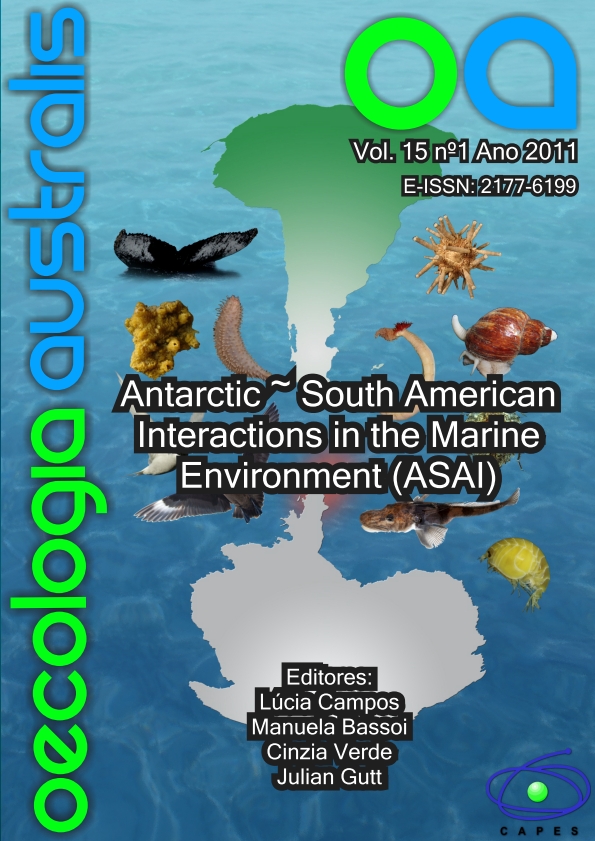ON THE RELATION OF ANTARCTIC AND SUBANTARCTIC SEABIRDS WITH ABIOTIC VARIABLES OF SOUTH AND SOUTHEAST BRAZIL
Keywords:
Association, bathymetry, dispersal, hydrography, migration, open ocean, winter.Abstract
The distribution of wintering seabirds is influenced by biotic and abiotic oceanic processes. Ocean productivity is a main parameter at small and large scales, but the role of abiotic parameters at large scales may be explored indeed. Thus, we conduced bird counting between Rio grande and Rio de Janeiro (Brazil) onboard NApOc Ary Rongel from 11 until 13 april, 2009. The samples comprised 10 minutes each hour, from sunrise until sunset. Abiotic data were collected by NApOc Ary Rongel equipments. Data were analysed through CDA, PCA of species and CDA functions, and Multiple Regressions of CDA functions with sum of all Antarctic and Subantarctic abundances, and sum of all tropical and subtropical abundances. We verified Through PCA Thalassarche chlororhynchos and T. chrysostoma are associated with greater wind speed and air temperature, Calonectris diomedea and Puffinus gravis are associated with greater depths, sea temperature and atmospheric pressure. As a group, Antarctic / Subantarctic species are associated with higher wind speed, higher air temperature, lower atmospheric pressures and lower depths. Tropical / subtropical birds did not responded to any CDA functions. At small scales, seabirds tend to respond to gradients of productivity, chlorophyll concentrations, depth and salinity. Nonetheless at larger scales, Seabirds may be mainly driven by wind, associated with low pressures zones. At larger scales, the ability of disperse over greater distances may play a fundamental role.


